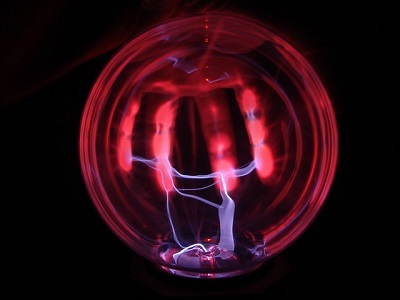Can Abnormal Vaginal Discharge Cause Pelvic Inflammatory Disease?
Vaginal discharge, a secretion of the female reproductive system, often reflects the body's health status. Normal vaginal discharge should be colorless and transparent or white, paste-like, odorless, and moderate in amount. However, when the discharge increases, turns yellow or green, appears curd-like, or has an abnormal odor, it may indicate a problem.

Pelvic inflammatory disease (PID) is inflammation of the female upper reproductive tract and surrounding tissues, mainly including endometritis, salpingitis, tubo-ovarian abscess, and pelvic peritonitis.
Can abnormal vaginal discharge cause PID?
In some cases, abnormal vaginal discharge is just a temporary response of the body. For example, during ovulation, due to changes in hormone levels, discharge may increase and become transparent and stringy, which is physiological and usually does not lead to PID.
Local irritation caused by inappropriate use of tampons, resulting in temporary changes in discharge, generally will not lead to PID if the irritating factor is promptly eliminated.
However, in certain situations, abnormal vaginal discharge, such as an increase in amount, color change (yellow, green, etc.), or abnormal odor (foul smell), often suggests the presence of gynecological diseases like vaginitis or cervicitis. If these conditions are not adequately treated, pathogens may ascend along the reproductive tract, infecting the uterus, fallopian tubes, and pelvic peritoneum, thereby causing PID.
For example, if trichomoniasis or bacterial vaginosis is not treated promptly, the pathogens may ascend and cause PID. Additionally, long-standing, uncontrolled cervical inflammation also increases the risk of developing PID.
In summary, although abnormal vaginal discharge is not a direct cause of PID, it serves as a crucial warning signal indicating potential gynecological infections that require prompt medical diagnosis and treatment. Doctors will use gynecological examinations, routine vaginal discharge tests, pathogen cultures, and other methods to identify the cause.
The treatment methods for abnormal vaginal discharge vary depending on the cause:
Vaginitis is typically treated with topical or oral medications. Cervical inflammation may require physical therapy or medication.
PID is generally treated with antibiotics, with the choice of oral or intravenous administration based on the severity of the condition. Patients with abscesses may need surgical treatment.
For more severe cases of vaginitis, cervicitis, and PID, herbal medicine like Fuyan Pill offers better therapeutic effects but should be avoided during menstruation and pregnancy.
How to Prevent?
1. Pay attention to personal hygiene
In the summer, when sweating is more common, wash the external genitalia with warm water daily, preferably twice a day (morning and night). When washing, clean from front to back to avoid transferring bacteria from the anus to the vagina. However, be careful not to over-cleanse or use random cleansing products, as this can disrupt the average balance of vaginal flora.
When using menstrual cups or tampons in summer, it's essential to insert and remove them correctly and replace them promptly, generally within 8 hours. After use, thoroughly clean and disinfect them to prevent bacterial growth.
2. Choose Suitable Underwear
It's best to wear light, breathable cotton underwear in summer and change it daily. Avoid tight, non-breathable synthetic underwear to reduce heat and moisture around the external genitalia, thus lowering the risk of bacterial growth.
3. Pay Attention to Sexual Hygiene
Before and after sex, both partners should wash their genital areas. Moderate the frequency of sexual activity in the summer and avoid overly frequent sex. Having a fixed partner and using condoms can effectively reduce the chance of infection.
4. Strengthen Immunity
Maintain a light diet with plenty of fresh vegetables and fruits, and avoid excessive spicy, greasy, or cold food intake. Engage in moderate exercise, such as walking or yoga, but avoid intense exercise during hot periods. Ensure sufficient sleep and avoid staying up late to help boost the body's resistance.
In conclusion, the relationship between abnormal vaginal discharge and PID is not absolute, and we need to judge and handle it based on specific situations. Women should always pay attention to their health, aiming for early detection and treatment.
You may also be interested in:
What is The Most Obvious Pain Location in Pelvic Inflammatory Disease?
Have You Ever Thought That Your Dysmenorrhea May Be Caused by Pelvic Inflammatory Disease(PID)?
How to Prevent Recurrent Chronic Pelvic Inflammatory Disease: These 4 Methods are Key
Can Pelvic Inflammatory Disease Cause Intestinal Symptoms?
previous pageWhy Does Pelvic Inflammatory Disease Cause Fatigue? Don't Ignore These 5 Symptoms!
next pageTestimonials
- Adenomyosis with Ureaplasma Urealyticum Cured by Fuyan Pill
- Tubal blockage with hydrosalpinx can be cured by TCM shortly
- Fuyan Pill Helps A woman with Adenomyosis Get Pregnant
- A Woman with Hydrosalpinx Is Cured with Fuyan pill
- Pelvic Inflammatory Disease Testimonials
- Irregular Vaginal Bleeding and Endometrial Thickening Cured by Fuyan Pill
- Pruritus Vulvae and Frequent Urination: Mycoplasma Infection Cured after 2 Courses



